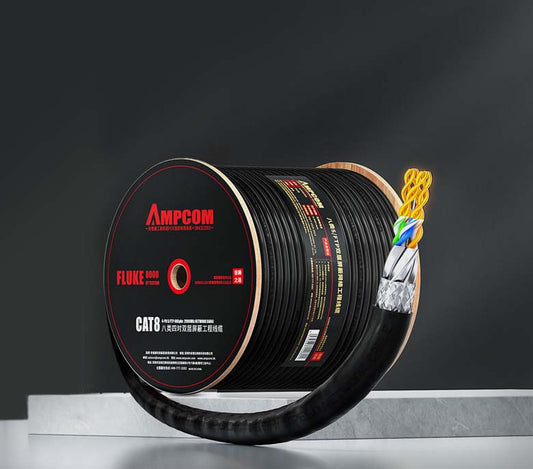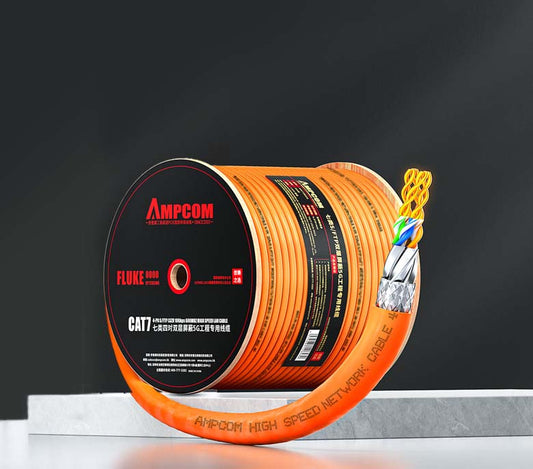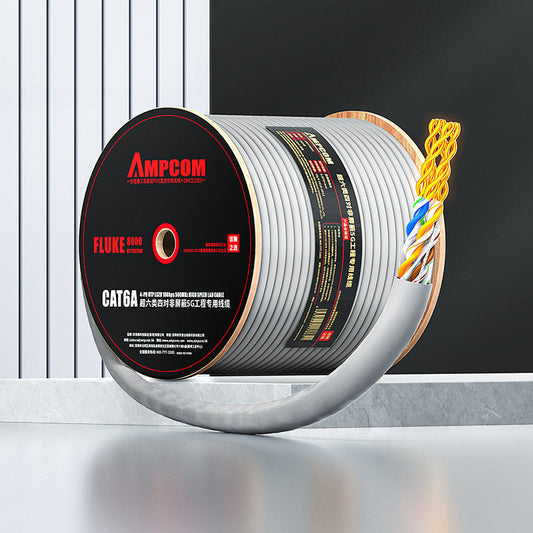HDBaseT 4K60 Patch Cord Selection: Cable & Connector Essentials
TL;DR
- For 4K60, start with Cat6a, 24AWG stranded patch cords and consider shielded construction in noisy spaces.
- Keep cords short, well-managed, and within bend radius; avoid tight bundles and flat cords in dense racks.
- Use quality RJ45s (proper plating & strain relief) and bond shields through the rack to building ground.
- Test the full channel (not just the permanent link) and save NEXT/RL/IL reports before handover.
What HDBaseT Demands at the Patch Level
HDBaseT can deliver uncompressed 4K60 reliably—if the end-to-end copper channel retains healthy margin. Most dropouts and “sparkles” trace back to small patch-level decisions: cable category, conductor size, shielding and bonding, bend radius, and the RJ45 you crimp.
Snow/sparkles → marginal return loss → plug termination, cord too short, bend radius
Random blackouts → noise ingress/alien XT → shielding choice, bonding path, bundling
EDID/HDCP handshakes → channel headroom → patch cords added at turnover, couplers
Cable Category & Construction: Cat6 vs Cat6a (Why Headroom Wins)
For 4K60, Cat6a is the default choice. It typically provides more insertion/return-loss headroom than Cat6, especially in high-density racks. Use 24AWG stranded for patch cords (flexibility + lower loss). Slim 28AWG cords can be convenient but reduce margin and thermal headroom on longer or bundled runs.
Indicative Headroom at Typical Patch Lengths
| Config | 3 m patch | 5 m patch | 10 m patch | Notes |
|---|---|---|---|---|
| Cat6a 24AWG (stranded) |
High margin |
Good margin |
Usable if channel is clean |
Preferred for 4K60; verify as part of the channel |
| Cat6 24AWG (stranded) |
Case-by-case |
Risky |
Not recommended |
May pass in short, low-noise channels; Cat6a safer |
| Cat6a 28AWG (slim) |
Reduced margin |
Risky when bundled |
Avoid |
Higher loss & less thermal headroom |
Indicative only—actual results vary by vendor, connectors, density, temperature, and routing. Always verify the full channel.
Deep dives you can link internally: Cat6 10G & installation variables, 28AWG thermal & PoE trade-offs.
Shielding & Grounding: Stable Pictures in “Noisy” Rooms
In high-EMI environments—dense AV racks, hospitals, factories, long metallic conduits—shielded cords plus a proper bonding path help maintain stability. Ensure continuity from jack → panel → rack → building ground (equipotential).
- Choose F/UTP or S/FTP Cat6a in noisy sites
- Bond panels and racks; remove paint at contact points
- Keep power cabling at distance; cross at right angles
- Leave shields floating (no “mystery grounds”)
- Stack long shielded cords in tight bundles
- Assume shielding fixes poor terminations
Related posts: Shielded vs Unshielded, STP grounding best practices, EMI/RFI solutions.
Connectors & Termination Quality (Small Parts, Big Impact)
- RJ45 plating & contact quality: thin plating drifts in reliability; pick reputable plugs and jacks.
- Maintain twist and geometry: avoid long untwist and conductor stubs that worsen return loss.
- Pass-through caution: some designs introduce impedance discontinuities; use vendor-approved components for HDBaseT.
- 28AWG compatibility: if you must use slim cords, match plugs specifically designed for 28AWG.
Installation Variables You Can Actually Control
- Bend radius & strain relief: respect minimum radius behind dense panels; use guides instead of tight zip-ties.
- Separation from EMI: avoid parallel runs near PSUs, dimmers, and VFDs; maintain spacing in trays.
- Bundle management: minimize large, tight bundles to limit alien crosstalk and heat buildup.
More on density & alien XT: Alien crosstalk mitigation, Data-center cabling pitfalls.
Acceptance Testing & Documentation
Patch cords often transform a passing permanent link into a marginal channel. Test the channel you will hand over, not just the link.
- Verify NEXT/PSNEXT, RL, IL headroom; record length and cord categories.
- Save the PDF report for audits and faster troubleshooting.
- Adopt a minimum patch length policy to avoid RL issues from “too short” cords.
Standards & methods: Component vs Channel testing.
Quick BOM Examples (Good → Better → Best)
| Tier | Patch Cord | Shielding | Panel/Rack | Use When |
|---|---|---|---|---|
| Good | Cat6a 24AWG stranded | U/UTP | Standard panel, good cable mgmt | Low EMI, short runs, moderate density |
| Better | Cat6a 24AWG stranded | F/UTP | Bonded panel, bonded rack | Light EMI (AV racks, office risers) |
| Best | Cat6a 24AWG stranded | S/FTP | Full bonding kit & verified continuity | High EMI (industrial, medical imaging) |
FAQ
Can Cat6 handle 4K60 over HDBaseT?
It may in very short, low-noise channels, but Cat6a provides far more headroom for return and insertion loss. For stable 4K60, choose Cat6a.
Do I always need shielded cords?
No. In high-EMI sites (dense AV, hospitals, factories) shielded cords plus correct bonding significantly improve stability.
Why do some pass-through plugs cause issues?
Some designs can introduce impedance discontinuities at the plug tip on high-frequency links. Use quality, non pass-through RJ45s or vendor-approved parts.
Are 28AWG slim cords safe for HDBaseT?
Use with caution. Their higher loss and lower thermal headroom reduce margin, especially on longer or bundled runs. Prefer 24AWG stranded Cat6a for 4K60.
How short is “too short” for a patch cord?
Very short cords can degrade return loss in some channels. Follow length policies and test the full channel before handover.
What report should I keep?
Save the full channel report (NEXT/PSNEXT, RL, IL, length). It documents acceptance and speeds future troubleshooting.



